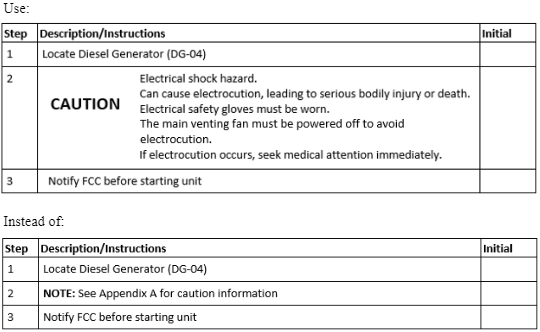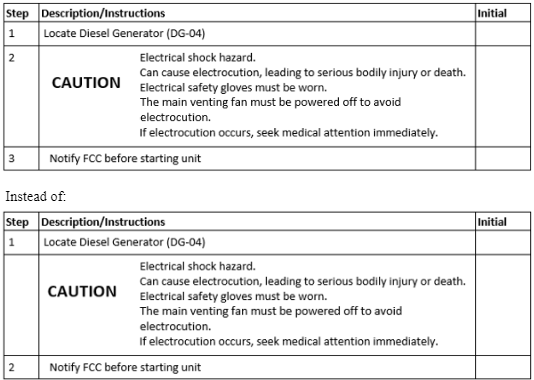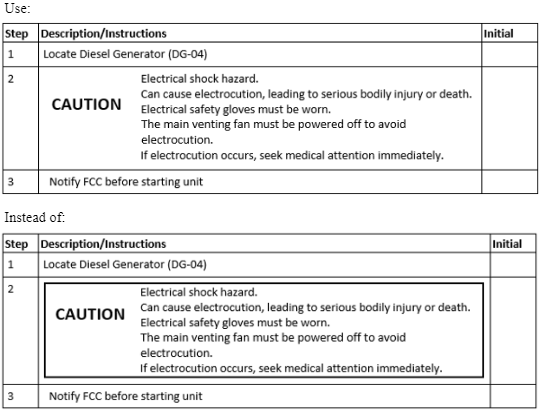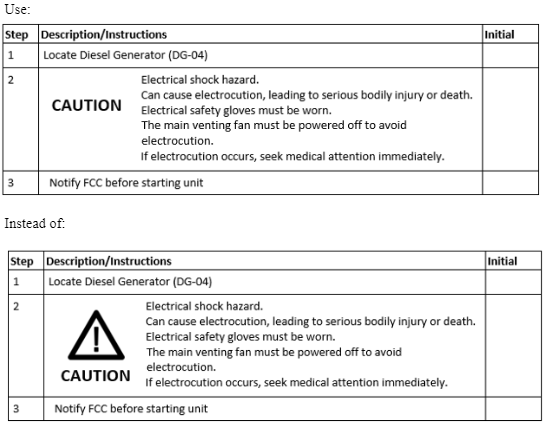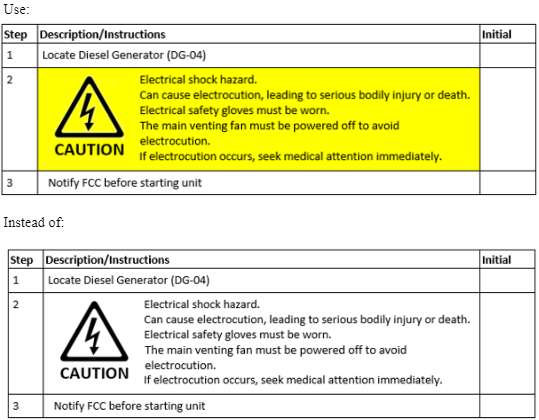Hazard Statement Format
The format in which hazard information is presented affects the likelihood that workers will comply with the information (Hendricks, et al., 2018).
Improperly designed hazard statements may lead to worker confusion, resulting in workers not finding them useful because they are difficult to follow (Embrey, 1999).
Hazard statements should be designed in such a way as to stand out from other procedure steps (Hendricks, et al., 2018).
